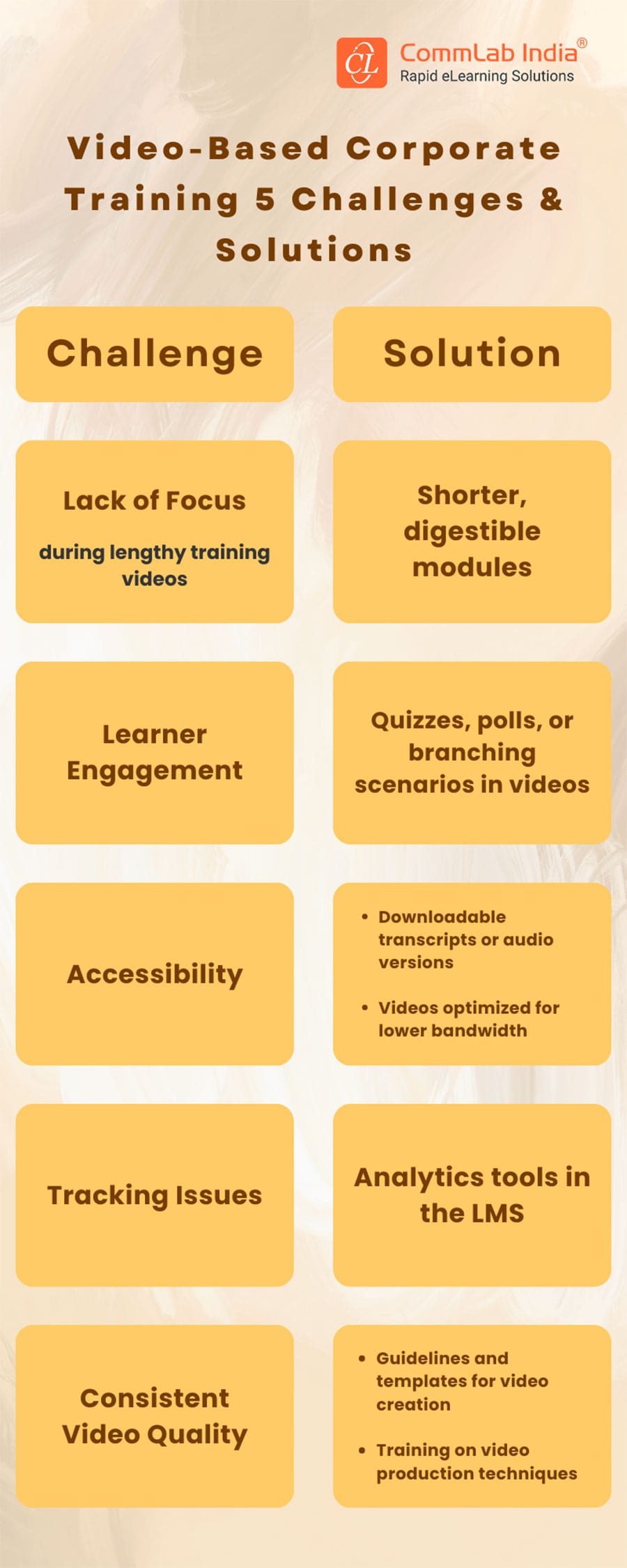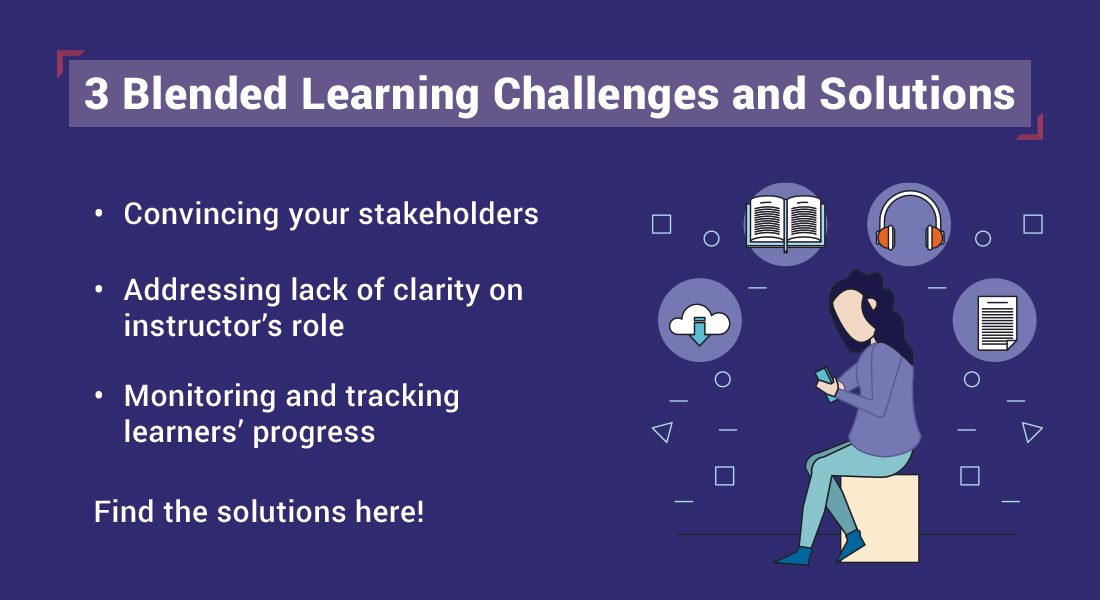Challenges in Video-Based Learning + Solutions [Infographic]
Video-based learning is a popular approach among L&D professionals. But it has its own challenges too. Read this blog to learn about the solutions.

Do you ever feel like maybe the traditional handouts-and-workbook approach might not just click with your modern-day learners? All factors considered, the lifestyle and learning habits of modern-day learners, you might not be wrong. There’s a high chance that your learners might zone out during lectures, or struggle to visualize complex ideas from pages of text. But don’t worry! There’s something keeping these modern-day learners quite attentive and engaged. You read it right. And that something is… VIDEOS. In fact, learners of all age groups are increasingly turning to video-based content. This presents a great opportunity for organizations to level up their corporate training initiatives through video-based learning.
And this blog is a great opportunity to get your basics right about video-based learning so you can make the most of it. Here, we will take a brief look at the benefits of video-based learning, the challenges associated with it, and their solutions. So without much delay, let’s begin.
Benefits of Video-Based Learning in Corporate Training
Enhances Learner Engagement
Learner engagement is the key to effective training. Videos never fail to capture attention and keep learners engaged. They make boring, monotonous topics interactive and immersive by incorporating audio and visual elements. This multimodal experience facilitated by videos caters to different learning styles and preferences that keep learners actively involved in the learning process. It leads to better understanding and application of concepts.
→ Download Now: Are You Ready to Charm Your Learners with the Magic of Videos?
Promotes Retention
Did you know that our brains process visual information much faster and retain it more effectively than text alone? Videos leverage this power by combining visuals with audio. It helps create a multi-sensory learning experience that fosters long-term retention.
Ensures Scalability
When it comes to rapidly growing organizations, the scalability aspect of training materials can be a big challenge. Either the selected training method is going over the budget or some employees might be left out because the training material isn’t ready on time. Regardless, it can be a major setback to both training ROI and company growth.
For such situations, video-based learning is a respite. You can easily create and share videos across a large workforce. This eliminates the need for repetitive in-person training sessions or coordinating virtual sessions time and again. It not only saves time and resources but also ensures consistency in the delivery of training content.
Allows Flexibility
Instructor-led Training (ILT) mandates learners to be present at a specific place and at a specified time. Virtual Instructor-led Training (VILT) offers flexibility of place but needs the learners to be available during the session. But video-based learning needs no such requirement. Learners can take up the training course anytime, anywhere, and proceed at their own pace. This flexibility caters to busy schedules and on-the-go teams.
Video-Based Corporate Training 5 Challenges and Solutions
To Sum It Up!
Video-based learning helps you equip your employees with relevant knowledge and skills without making it a boring or mundane task. Moreover, it blends the audio and visual elements that cater to diverse learning styles, making it a preferred choice for organizations dealing with a large audience. But how can organizations ensure high-quality, effective video-based learning content? Well, AI can be of help. Learn more about it in our eBook below!







